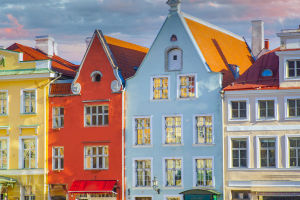Lake Hillier, situated on Middle Island in Australia's Leshersh Islands, is a mesmerizing natural wonder that never fails to astonish visitors.
Its distinct pink hue, resembling a solid cloud of bubblegum powder when viewed from a distance, holds a delicate charm even as one gets closer, revealing a translucent texture that still retains its vibrant pink shade.
Unlike other pink lakes such as the nearby Pink Lake and Lake Retba in Senegal, where scientists have determined the cause behind their rosy coloration, the reason for Lake Hillier's unique pink hue remains a mystery.
Nonetheless, numerous scientific theories have been proposed to shed light on this captivating phenomenon.
One prevailing hypothesis suggests that the lake's color is a result of its high salinity combined with the presence of salt-loving algae, known as Dunaliella salina, and halobacteria, commonly referred to as "pink bacteria."
These organisms interact and create a stunning pink surface on the lake. However, what sets Lake Hillier apart from other pink lakes is its year-round consistency in coloration, as it maintains its pink tint regardless of temperature fluctuations. Remarkably, even when collected and stored, the water retains its rosy hue.
Another enchanting pink lake can be found in Cape Verde, located at the westernmost point of French-speaking Senegal in West Africa. Spanning a mere 3 square kilometers, this salt lake exhibits varying shades of pink due to the abundance of salt-loving algae, which produce carotenoids.
The color of the lake is most vibrant from December to January each year, providing a visual spectacle that leaves visitors in awe.
Moving away from pink lakes, the Salar de Uyuni deserves a mention. Situated near the small town of Uyuni in southwestern Bolivia, it is the largest salt marsh in the world, often referred to as the "mirror of the sky."
Its expansive white landscape is a magnet for tourists worldwide and serves as a frequent backdrop for countless anime productions, attracting numerous animation teams daily.
Bolivia's Red Lake is another remarkable salt lake that showcases breathtaking beauty. Against the backdrop of the blue sky, the lake mirrors the shapes of passing clouds, amplifying its scenic appeal. As lighting conditions and perspectives change, the lake transitions through a stunning spectrum of red, orange, yellow, green, blue, and purple hues.
Perched at an elevation of 4,200 meters, the Red Lake is a sought-after destination for travelers from around the globe. Moreover, it is home to endangered flamingos, further highlighting the importance of the lake's conservation.
In recognition of its ecological significance, Red Lake was listed in the International Ramsar Convention on Wetlands in 1971, ensuring its protection for generations to come.
These extraordinary lakes, with their vibrant colors and captivating landscapes, serve as reminders of the sheer diversity and splendor of our planet's natural wonders.
From the mysterious pink hue of Lake Hillier to the picturesque reflections of the Salar de Uyuni and the ever-changing shades of the Red Lake, these destinations leave an indelible mark on the hearts of those fortunate enough to behold them.


